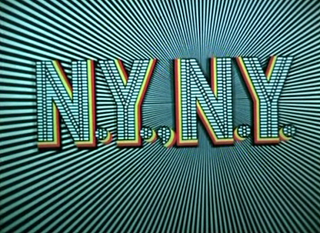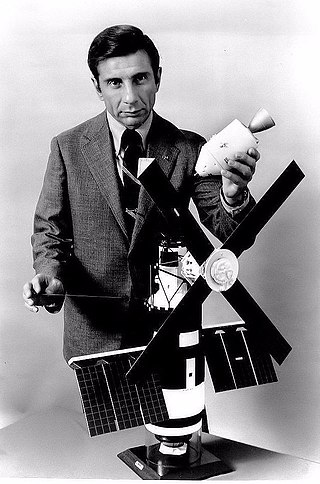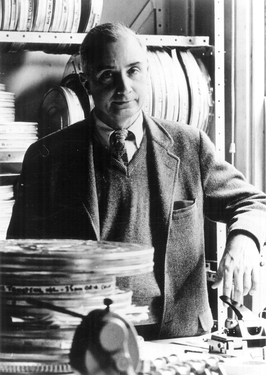
Moon landing conspiracy theories claim that some or all elements of the Apollo program and the associated Moon landings were hoaxes staged by NASA, possibly with the aid of other organizations. The most notable claim is that the six crewed landings (1969–1972) were faked and that twelve Apollo astronauts did not actually walk on the Moon. Various groups and individuals have made claims since the mid-1970s that NASA and others knowingly misled the public into believing the landings happened, by manufacturing, tampering with, or destroying evidence including photos, telemetry tapes, radio and TV transmissions, and Moon rock samples.

David Randolph Scott is an American retired test pilot and NASA astronaut who was the seventh person to walk on the Moon. Selected as part of the third group of astronauts in 1963, Scott flew to space three times and commanded Apollo 15, the fourth lunar landing; he is one of four surviving Moon walkers and the only living commander of a spacecraft that landed on the Moon.

The Dish is a 2000 Australian historical comedy-drama film that tells the story of the Parkes Observatory's role in relaying live television of humanity's first steps on the Moon during the Apollo 11 mission in 1969. It was the top-grossing Australian film in 2000.

Timothy Simon Roth is an English actor and producer. He began acting on films and television series in the 1980s. He was among a group of prominent British actors of the era, the "Brit Pack".

From the Earth to the Moon is a 12-part 1998 HBO television miniseries co-produced by Ron Howard, Brian Grazer, Tom Hanks, and Michael Bostick telling the story of the Apollo program during the 1960s and early 1970s in docudrama format. Largely based on Andrew Chaikin's 1994 book, A Man on the Moon, the series is known for its accurate telling of the story of Apollo and the special effects under visual director Ernest D. Farino.

Dark Side of the Moon is a French mockumentary by director William Karel. It originally aired on the Franco-German television network Arte in 2002 with the title Opération Lune.

For All Mankind is a 1989 documentary film made of original footage from NASA's Apollo program, which successfully prepared and landed the first humans on the Moon from 1968 to 1972. It was directed by Al Reinert, with music by Brian Eno. The film, consisting of footage from Apollo 7 through Apollo 17, was assembled to depict what seems like a single trip to the Moon, highlighting the beauty and otherworldliness of the images by only using audio from the interviews Reinert conducted with Apollo crew members.

N.Y., N.Y. is a 1957 film by director Francis Thompson.

Alexandr Hackenschmied, born Alexander Siegfried George Hackenschmied, known later as Alexander Hammid was a Czech-American photographer, film director, cinematographer and film editor. He immigrated to the U.S. in 1938 and became involved in American avant-garde cinema. He is best known for three films: Crisis (1939), Meshes of the Afternoon (1943) and To Be Alive! (1964). He made Meshes of the Afternoon with Maya Deren, to whom he was married from 1942 to 1947. His second marriage was to the photographer Hella Heyman, who had also collaborated with Hammid and Deren on several films.

Apollo 11 was the first human spaceflight to land on the Moon. The 1969 mission's wide effect on popular culture has resulted in numerous portrayals of Apollo 11 and its crew, Neil Armstrong, Buzz Aldrin, and Michael Collins.

The Apollo 11 missing tapes were those that were recorded from Apollo 11's slow-scan television (SSTV) telecast in its raw format on telemetry data tape at the time of the first Moon landing in 1969 and subsequently lost.

Jules Bergman was an American broadcast writer and journalist who served as science editor for ABC News from 1961 until his death in 1987. He is most remembered for his coverage of the American space program.
Christopher Riley is a British writer, broadcaster and film maker specialising in the history of science. He has a PhD from Imperial College, University of London where he pioneered the use of digital elevation models in the study of mountain range geomorphology and evolution. He makes frequent appearances on British television and radio, broadcasting mainly on space flight, astronomy and planetary science and was Visiting Professor of science and media at the University of Lincoln between 2011 and 2021.
Aram A. Avakian was an American film editor and director. His work in the latter role includes Jazz on a Summer's Day (1959) and the indie film End of the Road (1970).

Moonwalk One is a 1971 feature-length documentary film about the flight of Apollo 11, which landed the first humans on the Moon. Besides portraying the massive technological achievement of that event, the film places it in some historical context and tries to capture the mood and the feel of the people on Earth when man first walked on another world.
Al Reinert was an American journalist, film director, screenwriter and producer. He co-wrote the screenplays for the Ron Howard film Apollo 13 and Final Fantasy: The Spirits Within, but is best known for directing and producing For All Mankind, an award-winning 1989 documentary about NASA's Apollo program. He died of lung cancer at his home in Wimberley, Texas on December 31, 2018.
The Incredible Bread Machine is a text of political commentary written by R.W Grant in 1966, which discussed free market enterprise and Capitalism.
Footprints on the Moon is a 1969 documentary film covering the flight of Apollo 11 from vehicle rollout to Splashdown and recovery. It was directed by Bill Gibson and produced by Barry Coe, and is narrated by Wernher von Braun, with Pierre Jalbert doing additional voiceover as Jules Verne. It was edited by John F. Link Jr., who would later be nominated for his editing work on the 1988 film Die Hard. It is largely assembled from a variety of NASA and other news footage, with montage scenes assembled from still images standing in where no motion picture footage exists. The score includes Philip Moody's Laguna Concerto, a short work for piano and orchestra.

Apollo 11 is a 2019 American documentary film edited, produced and directed by Todd Douglas Miller. It focuses on the 1969 Apollo 11 mission, the first spaceflight from which men walked on the Moon. The film consists solely of archival footage, including 70 mm film previously unreleased to the public, and does not feature narration, interviews or modern recreations. The Saturn V rocket, Apollo crew consisting of Buzz Aldrin, Neil Armstrong, and Michael Collins, and Apollo program Earth-based mission operations engineers are prominently featured in the film.

E. Francis Thompson was an influential American film director, producer, and writer.















